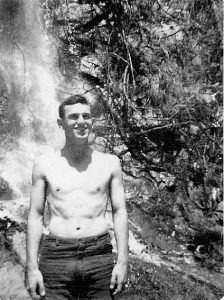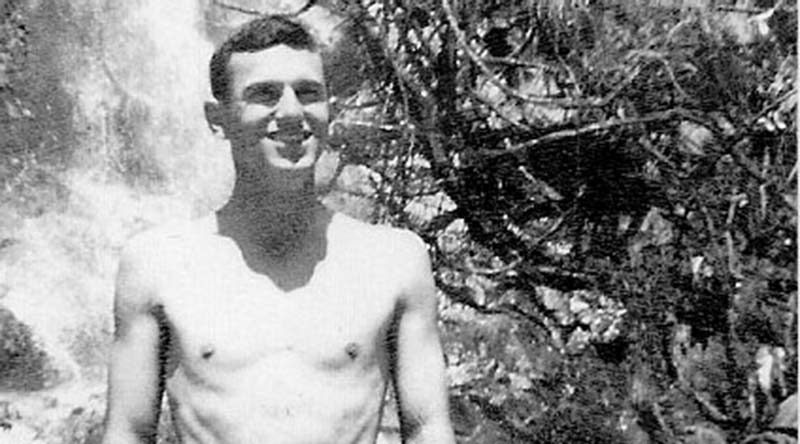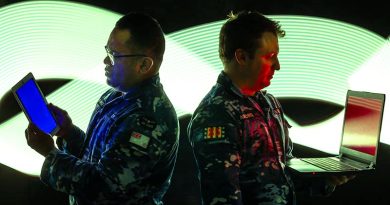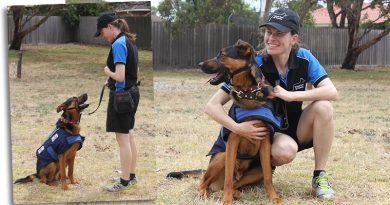Chapter 22: Boots

I had two pairs of boots: AB and GP.
There is some conjecture as to what these letters mean, some say AB stands for ankle boot whereas others say it stands for ammunition boot, a hangover from WWII. They do indeed only come up to the ankle and my ABs were issued to me at Kapooka. To ease the transition from boot to leg, the top of the AB were covered by gaiters; a canvas thingo that wrapped around your ankles. Sum Wun said they were to stop snake bites.

In Townsville we used the ABs for parades, or when on duty and you were required to wear number one greens. Number one greens were a heavily starched short sleeved shirt and shorts. That’s right, shorts. We didn’t wear gaiters with shorts, that would look silly, so Sum Wun invented the puttee. This was a thin strip of woollen material in olive drab colour that wrapped around the ankles to cover the gap from your AB boot to your socks. The hard part was lining the end of the puttee to the outside of the ankle. So tying it on was the same as doing up a tie, sometimes a tie would be too long and sometimes it’d be too short. It was the same for the puttee, sometimes it would end at the front of the ankle and sometimes it would end at the back of the ankle. The solution was to wrap it on your ankle slightly loose so that when it was fully wound it could be adjusted into place. The danger of course is that while marching on parade the bloody thing would unravel and all the boys behind you would trip over the bloody thing and come a gutsa. I don’t think the RSM would like that.
Oh, I forgot to mention that the toe of the AB boot had to be spit polished, you know, it had to have a brilliant shine much like a mirror. In the hot tropical Queensland sun they lasted about ten minutes before they went dull. Sum Wun said to use ‘One Go’ a commercial liquid polish which put a protective layer onto the spit polish, it lasted about twenty minutes before it went dull. In addition, when your foot started to sweat and seep out through stitching, it turned the polish white. I don’t think the RSM would like that either.
Still the AB boots were comfortable, but they were hopeless in the jungle. This is why we had the GP, the General Purpose boot. They laced up your ankle a couple of inches and this allowed you to do away with the gaiter. We laced them differently to the civilian equivalent. We tied a knot in the end of the lace and threaded it under the first eyelet. We then continued to thread the lace across the tongue, down through the eyelet, out through the next eyelet above and then threaded across the tongue; and so on. Once completed there was a rather neat single lace across each eyelet. Sum Wun said this was so that a bayonet could easily slice one lace and the whole thing would come apart if we injured our ankle and they wanted to get the boot off quickly. But we liked to lace our boots this way for another reason.
As we were using a single lace, when we wanted to take the boot off we simply loosen the lace back up through some of the eyelets. None of the eyelets were unthreaded. This was great at night in the bush as we could easily and quickly get our boots back on by simply tightening the lace – no threading of eyelets was required. Bewdy.
The GPs were water resistant rather than water proof. When they were new, or had plenty of polish on them, a digger could step through a puddle and no water would seep into his foot. However a couple of days in the bush and the toes became scuffed and water seeped in, particularly on wet grass from walking in the early morning dew. My father always drummed into us boys the need to polish your shoes. Before school every morning I would polish my shoes. My father said it protected the leather and preserved the stitching, so I cleaned my boots every day in the bush whereas a lot of blokes didn’t bother. So mine tended to be more water resistant than the other blokes’ boots.
On non-ceremonial duties where we were wearing the GPs with shorts we simple curled the socks over the edge of the GP for about an inch. The boots were heavier than their commercial equivalents because of a metal inner sole that protected diggers from punji sticks. I dunno if they worked because I dunno anyone who tested them, but besides making the boot heavier they were also hotter when marching on tarred roads because the metal plate seemed to trap the heat. In addition, you tended to swing your foot rather than lift it, so you modified the way you walked and marched in GPs.
Overall diggers were quite happy with the GP boot because it was new. There were two types, Dunlop and Seal. I liked the Dunlops. I had a wide foot and a high instep and I found them to be the most comfortable. The Seal boots tended to have a rather bulbous toe I thought and they didn’t look as good as the Dunlop boot. I think Regs, Artillery, blokes from Canberra and other dickheads liked the Seal boot.
But enough of this esoteric bullshit, let’s board those racing trucks and head out to High Range. I don’t have to tell you that High Range was hilly, that’s a given; but it didn’t have quite the intensity of jungle as Mt Speck and in some places it was quite dry. It was a good place to invoke more water discipline.
We had more new blokes arriving and others leaving as the platoon sorted itself out in readiness for Vietnam. We worked hard and we were a well disciplined group, or so I thought. I dunno if Tojo the platoon sergeant would agree. But each day seemed to be getting tougher and tougher. By now we were super fit. Fitness to me still meant that I puffed and sweated a lot, the difference was that after a minute’s rest I was rearin’ to go again.
We still carried Maggi soup packets in our side pockets because the Army rations, although nutritionally sound, were impossible to carry intact if you had more than a couple of days supply. That meant we culled much of the rations, and because we were subject to extremely physically demanding work, and we were not getting enough fluids, and we were not getting enough sleep; it affected us mentally as well as physically. We lost a lot of weight.
But still we soldiered on. My job as number two on the machine gun meant that I was essentially a pack mule. I didn’t get the glory of being the machine gunner and to be quite honest I didn’t think I could carry the M60 for long anyway; my role was to support Killer. During contact drills he would be in front of me and when we had to run forward and then to the right, I tried to get past him to clear a way for him and the gun to get into a good and effective position to return fire as quickly as we could. Sometimes Killer thought I was getting in his way. He and I got on OK most of the time with a little bit of bickering here and there as we sat behind the gun together while the rest of the section went about the normal routine of preparing track plans and work parties. In essence that freed up the rest of the section to do other stuff as Killer and I stayed on the gun all the time. The other sections didn’t work like that, they had a roster system where the gun team would take a break, but we felt sitting behind the gun was a pretty good deal for us. There were no interruptions and we weren’t called away for other duties or water parties or anything else like that; we sat behind the gun. That was our job.
Most exercises followed a similar pattern. Move the soldiers into an area, let them get squared away with the way they work together, then go tactical and give them tasks such as patrolling, ambushing, recce parties etc, to contact the enemy; and then finish in a blaze of glory with a large attack where we get to fire off all the ammo we were carrying around.
Now no one likes to get shot, but we must have make believe casualties in training so that others get to practice their duties. Platoon sergeants do battlefield clearance of the dead and wounded, so they must get exposed to this. Soldiers in waiting, the section 2IC and the number two on the machine gun, must take over the roles if the main guy, the section commander or machine gunner, get killed or wounded.
That’s where the DS come in. It doesn’t stand for dead shits, Sum Wun said they were Directing Staff. They were usually officers or senior NCOs who were not part of our establishment, usually we never saw them before as they came from other units. So during the big battle at the culmination of an exercise, Killer would get killed off. This meant that I had to retrieve the machine gun and ammo and I had to get the gun working as quickly as I could. This really pissed Killer off, he lugged the machine gun and ammo around for days on end and when the chance came to really get stuck into firing the thing the DS would kill him off.
So we developed a strategy. When Killer was made a casualty I would leave my rifle with him and take the gun and charge off like a man possessed runnin’ and jumpin’ and shootin’ in a manic state. The DS would be taken off guard and would try to catch up with me. This is in stark contrast to most machine gun groups who would argue with the DS. Killer would drop to the ground without protest and I was gone with the machine gun with the DS in total shock and trying to keep up with me, leaving Killer behind by himself.
Killer would wait a few moments and then he would start to move forward in leaps and bounds like a real trained digger. The DS moved about a fair bit and because they didn’t know us Killer would catch up with me unchallenged and we’d swap weapons back so he could start blasting away with HIS weapon. No DS ever caught on.
A couple of the boys were in trouble during the exercise. Digger from WA had to get winched out by helicopter due to heat exhaustion. They took him back to rear echelon somewhere and threw him in a tub with iced water. He said a few blokes went down with the same thing. I dunno if he got a root or not back there.
I haven’t mentioned Browny yet, another Nasho from WA. One of nature’s gentlemen. He was a forward scout, one of the best. He missed nothing. When he got a bee in his bonnet he would take off and we’d have a hard time trying to keep up. The dentist removed all his teeth just prior to the exercise, so he was out at High Range with no teeth. It was quite funny really, but he was suffering as he could hardly eat anything. He had to soak the dog biscuits for some time before he could eat them. Poor bastard.
The final part of the exercise would require us to W-A-L-K to the racing trucks, they were a long way away and you guessed it, it was usually uphill. Our spirits would be high because the exercise was over but the toll on our bodies was immense: we were tired, hungry and thirsty but waiting at the racing trucks was the Sally Man, the Army’s Salvation Army officer. On board his Landrover were gallons of jube juice, flavoured water, and it was ice cold.
He was a life saver.
Vietnam is going to be a cinch after what we are going through.
.
.
.
Reproduced with permission from FUN, FEAR, FRIVOLITY – A tale by an Aussie infantry soldier in the VIETNAM WAR. If you can’t wait, read more of this story now – or wait out while we reproduce it on these pages.
Hi guys. I am a good-looking, opinionated old fart who relishes a spirited debate on any topic regardless of how much I think I know about it.
Ian Cavanough,
Tumut, NSW
.
.
.
.
.

.
.




